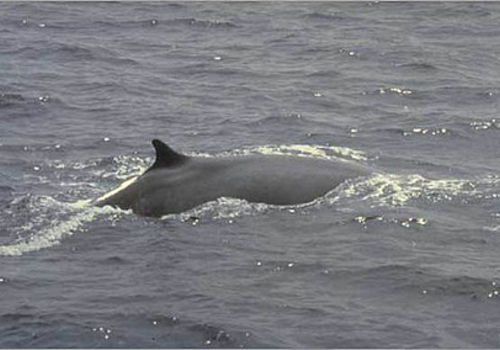
Fin whale
Balaenoptera physalusFin whale
Introduction: The fin whale (Balaenoptera physalus) is also called the finback whale, razorback, or common rorqual, belonging to the suborder of baleen whales. It is the second largest whale and the second largest living animal after the blue whale. It has a lifespan of 30 to 40 years. Features include a slender body with a pointed head and a large dorsal fin three-quarters of the way down the body.
Many large whales, including the fin whale, were heavily hunted during the 20th century and it has therefore become an endangered species. Less than 3,000 currently remain in the southern hemisphere region. Collisions with ships also significantly threaten recovery, as does noise from human activity.
Distribution: The coast of Namibia as for north as Swakopmund
Diet: Krill
Colouring: The back and top of the head are dark grey. The sides are lighter and the belly and fluke undersides are white. The left side of the head is darker than the right.
Breeding: Gestation periods are 11 months and calves are 6.5m long at birth
Size: Grows to nearly 27m in length


.png?width=82&height=85&name=Navigate%20Namibia-03%20(1).png)